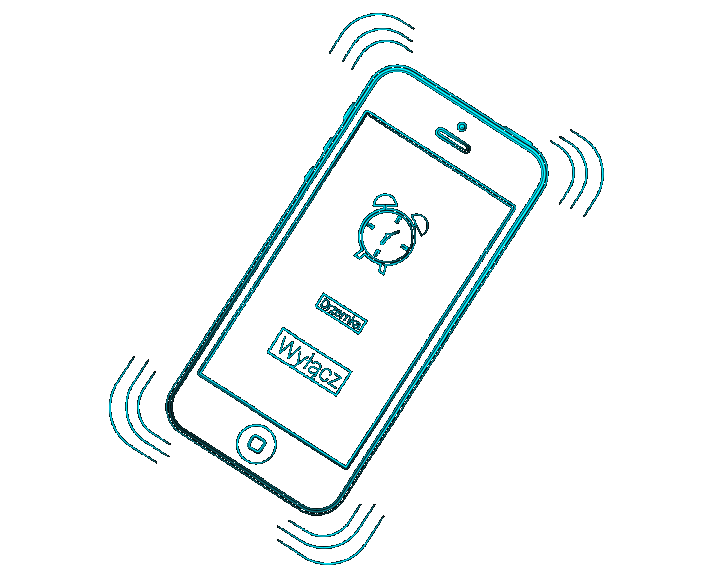Human sleep is divided into
two main phases, which depend on eye movement. The first is the
REM phase (rapid eye movement), in which the eyes
move rapidly. The second is the
nREM phase (non-rapid eye movement), in which the eyes
do not move, and any movements are slow. An intelligent alarm clock combined with equipment measuring
body parameters, such as an advanced smartwatch, can
recognize these phases to adjust waking accordingly.
Each
sleep stage is associated with specific brain waves and neuron activity. During a
typical night, each of us goes through these stages
multiple times. The closer it is to morning, the longer the
REM phases become. On the other hand, the stages dividing the
nREM phase become shorter.
The first stage of the
nREM phase is the transition from wakefulness to sleep. During this short stage,
sleep is still shallow, and we may feel like we're not yet asleep. Heart rate, breathing, and eye movements slow down, and muscles relax. Alpha waves are replaced by
slower theta waves.
The second stage of the
nREM phase is a period of light sleep. In this stage, we can still
wake up relatively easily. Muscles are even more relaxed, and
heart and breathing rates slow down further. Additionally, body temperature
decreases, and eye movements basically stop. Sleep spindle waves are noticeable in the electroencephalogram (EEG) at this stage. Dreams usually do not occur in this stage, although we spend
most of the night in it. However, some people may experience a sensation of falling from a height during this stage.
The third stage of the
nREM phase is a period of deep sleep. This is essential for feeling rested in the morning. It occurs in longer periods, mainly in the
first half of the night, becoming less frequent later on. Maximum slowing of
heart rate and breathing occurs, leading to a reduced pulse. Delta waves appear, but they are mixed with
theta waves. It's worth noting that it's
most difficult to wake up from this stage of sleep.
Only after this does the
REM phase appear, usually entering it around
90 minutes after falling asleep. Characteristic of this phase is that the
eye movements occur rapidly from side to side, despite closed eyelids. Brainwave activity with
mixed frequency approaches that observed during wakefulness. Breathing becomes
faster and irregular, and heart rate and blood pressure rise to levels close to those during
wakefulness.
Most
dreams occur during the REM phase. Muscles of the arms and legs are
temporarily paralyzed during this phase to prevent harm to oneself or sleeping with others. However, with age, the time in the
REM phase gradually decreases due to a natural decline in
melatonin levels. While it was once believed that only the REM phase is essential for maintaining
psychological comfort and memory consolidation, it is now known that memory consolidation requires both REM and nREM sleep. However,
REM sleep remains crucial for emotional balance.
The
sleep cycle described above repeats typically 5-6 times a night. We feel best when we wake up during the
first or second stage of the nREM phase. This is where the
intelligent alarm clock comes into play, as well as other sleep monitoring applications. Thanks to them, we ensure an
adequate amount of sleep, allowing for better regeneration. It is worth mentioning that sleeping
naked is beneficial for the body and influences the occurrence of phases.
